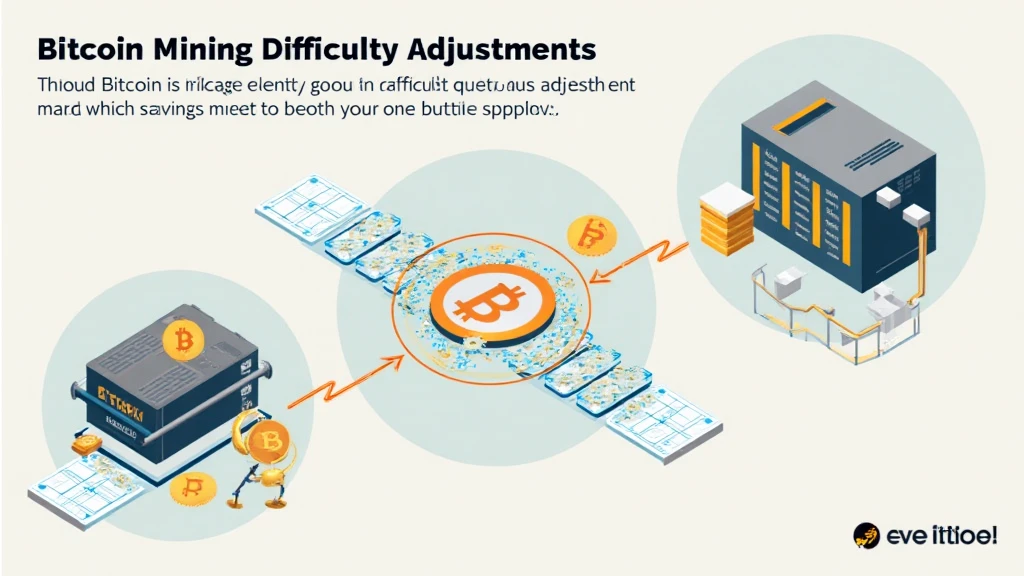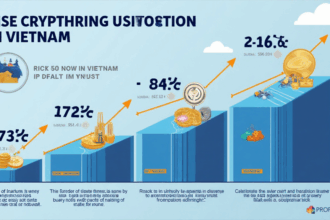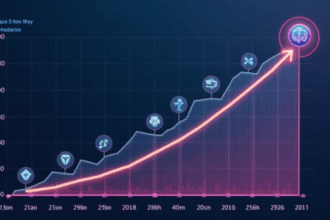Bitcoin Mining Difficulty Adjustments: Understanding the Mechanisms
As of 2024, the cryptocurrency space has seen a staggering transformation, with over $4.1 billion lost in DeFi hacks. Amidst all this tumult, Bitcoin stands as a beacon, primarily due to its well-structured mining process. One of the critical aspects that ensures Bitcoin remains steady despite fluctuations in mining participation is the Bitcoin mining difficulty adjustments. This article will explore the mechanisms behind these adjustments, their implications for miners, and their overall significance in the cryptocurrency ecosystem.
What are Bitcoin Mining Difficulty Adjustments?
Bitcoin mining difficulty adjustments are a fundamental aspect of the blockchain’s protocol, designed to regulate how difficult it is to mine new blocks. Every 2016 blocks, roughly every two weeks, the Bitcoin network assesses how much computing power (hashrate) has been directed towards mining. Depending on this hashrate, the system either increases or decreases the difficulty level to maintain an average block creation time of 10 minutes.
The Importance of Mining Difficulty
- Stability: By adjusting the difficulty, Bitcoin maintains stability in its block creation, ensuring that transactions continue to be processed efficiently.
- Incentive for Miners: Miners are incentivized to contribute their computational power to the network, knowing that the difficulty will adjust to balance their efforts.
- Network Security: Higher difficulty levels generally mean a more secure network, as it requires more computational power (and hence, monetary investment) to launch a successful attack.
In essence, these adjustments act like a balancing act, ensuring that the network remains robust and operational even as the number of miners fluctuates.

How is Mining Difficulty Adjusted?
The adjustment process is automatic and occurs every 2016 blocks. Here’s how it works:
- The Bitcoin protocol calculates the time it took to mine the last 2016 blocks.
- If it took less than 20160 minutes (i.e., 10 minutes per block), the difficulty will increase.
- If it took more than 20160 minutes, the difficulty will decrease.
- The maximum adjustment is capped at 4 times the previous difficulty to avoid extreme fluctuations.
This mechanism ensures that whether there is an influx of miners or a sudden drop in participation, Bitcoin can remain on track with its goal of consistent block times.
The Impact of External Factors on Mining Difficulty
Various external factors influence mining difficulty adjustments significantly:
- Hashrate Variability: As more miners join or leave the network, the hashrate can vary substantially, leading to subsequent difficulty adjustments.
- Market Conditions: During bull markets, an influx of miners can push difficulty up, while bear markets can lead to miners leaving the network.
- Technological Advances: New mining hardware can improve efficiency, thus altering the dynamics of hashrate and, consequently, difficulty.
Each of these factors plays a crucial role in maintaining the equilibrium in the network’s performance, ensuring that Bitcoin can continue to thrive in changing circumstances.
Case Studies of Difficulty Adjustments
To further understand the practical implications of Bitcoin mining difficulty adjustments, let’s look into two case studies:
- Case Study 1: The Great Mining Exodus
In 2022, a significant drop in Bitcoin prices led many miners with older, less-efficient hardware to exit the market. This caused a sharp decrease in hashrate, resulting in a subsequent reduction in mining difficulty, allowing remaining miners to benefit from a lower competition environment. - Case Study 2: The Hashrate Surge in 2023
The introduction of ASIC miners boosted the hashrate significantly. The mining difficulty subsequently increased, which meant that it became harder for miners to profit. However, this adjustment helped stabilize the network and maintain a consistent block time.
These case studies highlight how intrinsic mechanisms such as difficulty adjustments help keep the Bitcoin network stable and secure.
Local Context: Bitcoin Mining in Vietnam
The cryptocurrency market in Vietnam has been growing at an impressive rate, with a user growth rate surpassing 150% in 2023. This rapid increase in interest in cryptocurrencies has also led to a surge in Bitcoin mining activities. As more Vietnamese users engage with Bitcoin mining, plays a role in the global hashrate and subsequently influences the difficulty adjustments.
Local miners need to stay informed about mining difficulty adjustments, as they can directly influence profitability. In the Vietnamese context, understanding these mechanisms can help miners navigate the local regulations and energy costs effectively.
Future Outlook: The Evolution of Mining Difficulty
Looking ahead, the mechanisms of Bitcoin mining difficulty adjustments may adapt further to account for changing network dynamics:
- Technological advancements may lead to even more efficient mining equipment.
- Environmental regulations may lead to a greater emphasis on renewable energy sources for mining.
- Global market demand for Bitcoin will continue to have direct correlations with mining difficulty.
As we approach the next halving event, miners will need to prepare for the challenges that come with adjusting difficulty regularly. The landscape of Bitcoin mining is set to evolve, and understanding these adjustments will be crucial for any stakeholders.
Conclusion
Bitcoin mining difficulty adjustments are a vital component in the functioning of the Bitcoin network. They ensure that transaction times remain consistent, maintain network security, and adapt to changing conditions in the mining community. As the cryptocurrency sphere grows and develops, understanding these adjustments will become increasingly important for miners and investors.
To wrap things up, whether you’re mining in Vietnam or anywhere else, staying abreast of how mining difficulty works can significantly influence your profitability and strategy in the ever-evolving world of cryptocurrency.
bitcryptodeposit provides comprehensive resources and tools for miners to navigate this dynamic landscape effectively.
About the Author
John Smith is a prominent cryptocurrency expert with over a decade of experience in the blockchain sector. He has published numerous articles on blockchain technology and was a key advisor in major crypto audits and projects.







